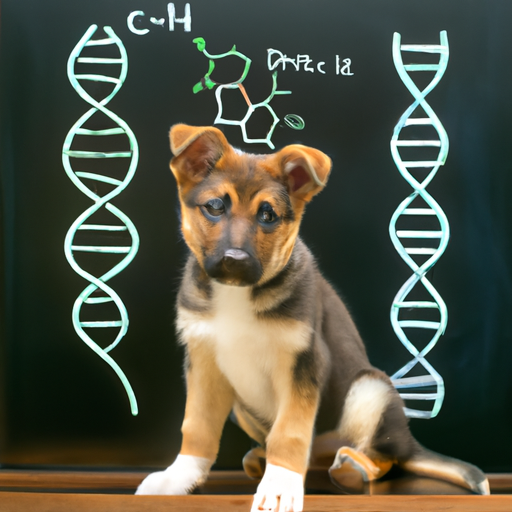Understanding the Science Behind the Creation of Dogs
You might be curious about how dogs are created. Well, the process is not as complicated as one might think. Firstly, it begins with the mating of a male and a female dog. When the female is in heat, she releases eggs from her ovaries, which then get fertilized by the sperm from the male dog. This process is known as conception.
Once the egg is fertilized, it starts to divide and grow into a cluster of cells. This cluster then implants itself into the uterus of the female dog, where it continues to grow and develop. After 63 days, give or take, a puppy is born. This is a simple explanation of the biological process, but there’s more to the story than just biology.
The Role of Genetics in Dog Breeding
The creation of dogs is also heavily influenced by genetics. You, as a caregiver, may have noticed that certain traits or characteristics are passed down from parent dogs to their puppies. This is because each puppy receives a set of genes from both its mother and its father. These genes determine everything from the color of the dog’s coat to its size and temperament.
For example, consider a table showcasing a few common breed traits:
| Breed | Size | Coat Color | Temperament |
|---|---|---|---|
| Labrador Retriever | Large | Yellow | Friendly |
| German Shepherd | Large | Black/Tan | Protective |
| Beagle | Medium | Tri-color | Curious |
How Humans Have Shaped Dog Breeds
The dogs we see today are the result of thousands of years of selective breeding by humans. Early humans realized that they could breed dogs with certain traits to perform specific tasks, such as hunting, herding, or guarding. Over time, this led to the creation of the many different dog breeds we know and love today.
Here are some ways humans have influenced dog breeding:
- Selecting for size: Small dogs for companionship, large dogs for protection and work.
- Selecting for temperament: Gentle dogs for families, aggressive dogs for hunting and protection.
- Selecting for physical traits: Long-haired dogs for cold climates, short-haired dogs for warm climates.
The Ethical Implications of Dog Breeding
As fascinating as the creation of dogs is, it’s important not to overlook the ethical implications. Overbreeding and inbreeding can lead to health problems in dogs, such as hip dysplasia, heart disease, and respiratory issues. Moreover, many dogs end up in shelters because they were bred by irresponsible breeders who didn’t take the time to find them good homes.
As a caregiver, your role is to ensure the well-being of your furry friends. So, when considering getting a dog, always consider adopting from a shelter or rescuing one in need.
Frequently Asked Questions (FAQs)
Q: How long does it take for a puppy to be born?
A: Typically, it takes about 63 days from conception for a puppy to be born.
Q: Can you predict a puppy’s traits based on its parents?
A: Yes, to an extent. A puppy inherits traits from both its parents, but there can always be surprises.
Q: What can I do to help prevent overbreeding?
A: Consider adopting a dog from a shelter or a rescue group, rather than buying from a breeder. If you do buy from a breeder, make sure they are responsible and ethical.
Q: What are some health problems caused by inbreeding?
A: Inbreeding can lead to a range of health problems, from physical issues like hip dysplasia to genetic disorders and reduced lifespan.
In conclusion, the creation of dogs is a fascinating process that combines biology, genetics, and human intervention. As a caregiver, understanding this process can help you better care for your canine companions and make informed decisions about their well-being.



